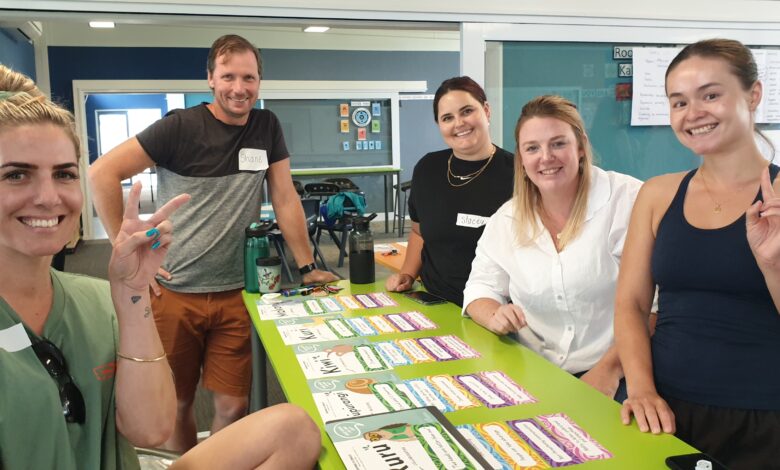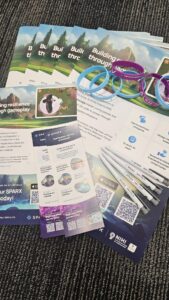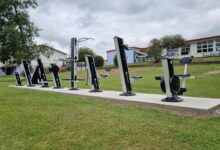From Stress to success: Supporting teacher and student wellbeing
Positive wellbeing means resilient communities and effective learning.

Recent years have seen increased awareness of the importance of wellbeing and hauora in school. Most are now aware that looking after one’s wellbeing isn’t just a nice-to-have bonus, it is an essential foundation to success, whether academically, socially or professionally.
Students with positive wellbeing learn better and are more resilient to stressors. For teachers, wellbeing is important to ensure you can continue to show up for your students.
Read the latest print edition of School News online HERE.
School is one vital way that young people learn about looking after their mental health and wellbeing. Teachers are an essential part of this picture, supporting students through certain challenges they may face. Having a positive teacher-student relationship is associated with strong wellbeing, and because young people spend so much time at school it is often where challenges arise.
Many PLD programs are available for teachers to build their capacity in supporting wellbeing, and support may look different for children of different ages. Students of any age can also be taught appropriate coping strategies and mechanisms to help them through challenges, such as mindfulness and how to appropriately identify and communicate their feelings. Teachers can incorporate wellbeing boosts into their daily routines to help their students develop resilience and emotional intelligence.
Educators are a vital resource in any school community, which means their wellbeing is essential. Workplaces that support staff wellbeing have higher retention rates, stronger loyalty and less sickness.
Promoting good habits with stress and workload management are some ways to help address staff wellbeing in schools. This might look like good work-life boundaries, promoting physical activity, and having adequate professional support.
Schools should look to build and maintain a culture of wellbeing among staff and the wider community. These school-wide approaches can be very successful, and may involve instating specific policies, modelling positive, respectful and supportive behaviours, and celebrating successes.
To successfully improve school wellbeing, a baseline should be measured. Wellbeing@Schools offers surveys and other tools to help school leaders understand wellbeing in the community. To tackle specific issues, staff and leaders may want to develop their own questions or questionnaires to add to this process.
Besides wellbeing tools and resources available online, there are also apps and games available to help support wellbeing. These have the advantage of being highly accessible and available, for whenever they may be needed. However, they cannot diagnose or replace other forms of wellbeing support.
A sample of wellbeing programs available to schools
2025 is a special year for Te Rōpū Rongomau o Aotearoa/The Peace Foundation, which is celebrating its 50-year anniversary. The organisation has been delivering innovative training in peer mediation to kura throughout Aotearoa for 30 years. A registered charity, the Peace Foundation is the only national organisation which offers peer mediation programs for primary, intermediate and secondary schools which are contemporary and culturally responsive.
Effective implementation of the Peace Foundation’s programs has a positive impact on the well-being of both kaiako and ākonga. Through either one-on-one kōrero or working with the support of two mediators, disputants work to resolve their minor conflicts without teacher intervention. Both the one-on-one kōrero and the mediation process are safe and empowering for the disputants who often come to a solution that meets their needs.
Kaiako benefit when well trained, confident mediators are on duty. If the primary (Cool Schools) and secondary (Leadership through Peer Mediation) programs are embraced school wide, then kaiako understand what type of conflict in the kura is classified as ‘minor’ and can refer this on to the student peer mediators. When a ‘minor’ conflict is dealt with, it does not escalate into ‘major’ conflict, which teachers need to manage. Long-term program implementation can result in a more peaceful, safe, respectful school environment that supports kaiako to enjoy their breaks without conflict stress, and teaches lifelong conflict management skills to ākonga. Win-win for all!

SPARX is a free, evidence-based online tool that uses cognitive behavioural therapy (CBT) to help young people aged 12 to 19 develop essential mental health skills in an engaging, interactive way. Through a fantasy-themed journey, students learn practical techniques to manage stress, anxiety, and other challenges in a format that resonates with them.
To help schools make the most of SPARX, school offices, counsellors, and teachers can now request free resource kits that include posters, bookmarks, wristbands, pens, tote bags and other engaging materials. This initiative is designed to help schools incorporate SPARX into their wellbeing efforts and guide rangatahi in Aotearoa toward tools that strengthen resilience.









